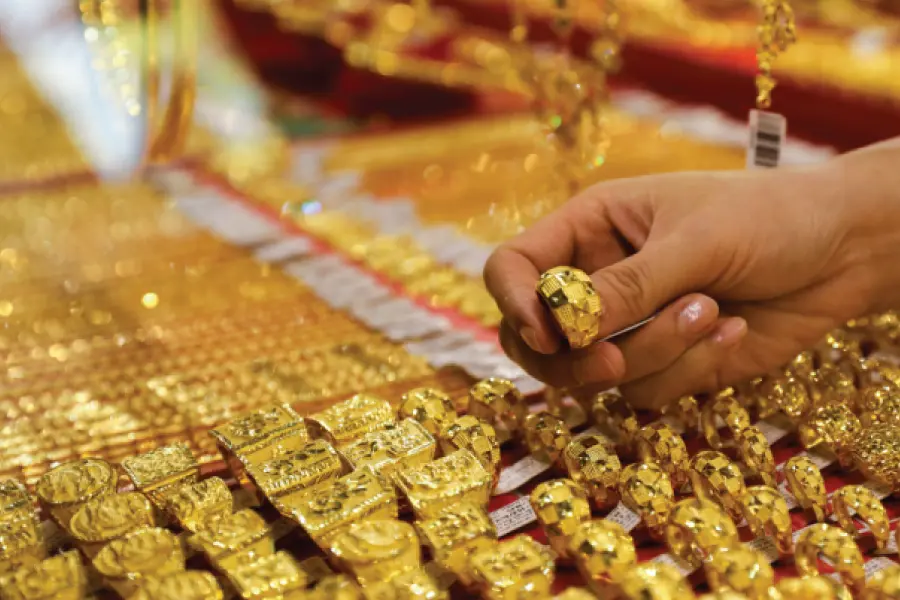RIDING THE TIDES OF DESIGN
- THE BUZZAAR
-
Oct 01
- Share post

Brew-tiful Moments: Raise Your Mug to International Coffee Day!
Every year on October 1st, coffee lovers around the globe unite to celebrate International Coffee Day, an occasion dedicated to honoring one of the world’s most beloved beverages. Whether it’s that first morning cup that helps jump-start the day or an afternoon pick-me-up, coffee has woven itself into the fabric of daily life, culture, and social interaction.

International Coffee Day was established by the International Coffee Organization in 2015 to promote the coffee industry, raise awareness about sustainable practices, and recognize the efforts of millions of farmers who work tirelessly to bring this essential drink to our tables. It’s more than just a celebration of the drink itself; it’s also a moment to acknowledge the challenges faced by coffee producers, such as fair trade issues and the impact of climate change.
Coffee holds a special place in the hearts (and hands) of people worldwide. Whether you prefer an espresso in Italy, a frothy cappuccino in Australia, or a sweet café de olla in Mexico, there’s a wide variety of ways to enjoy this versatile drink. Its ability to bring people together, sparking conversation and connection, is unmatched. Coffeehouses, after all, have long served as community hubs for thinkers, artists, and entrepreneurs alike.

On International Coffee Day, it’s important to not only savor the flavor but also consider how our coffee habits can contribute to a more sustainable future. Choosing coffee that is Fair Trade certified or ethically sourced ensures that farmers receive fair wages and work in safe conditions. Supporting brands that prioritize sustainability helps preserve the environment, especially as coffee farming is deeply affected by climate change.
So, on this special day, take a moment to appreciate the warmth, aroma, and culture that coffee brings into your life. Raise your mug, share a brew-tiful moment with friends, and toast to a future where every cup helps make the world a little better!
Grin and Win: How Smiling Can Change Your Day!
A simple smile can have a profound impact on your day. Whether it’s a natural grin in response to something delightful or a smile you choose to wear in challenging moments, the power of this small gesture is remarkable. Smiling isn’t just an expression of happiness; it can also be a tool for improving your mood, relationships, and overall well-being.

Smiling triggers a cascade of positive effects in the brain. When you smile, your brain releases endorphins—the body’s natural “feel-good” chemicals—as well as dopamine and serotonin, which reduce stress and lift your mood. Even a forced smile can trick your brain into feeling happier. This phenomenon is often referred to as the facial feedback hypothesis, which suggests that facial movements can influence emotional experiences.
Smiling is also contagious. When you smile at someone, they are likely to smile back, creating a shared moment of positivity. This not only improves your day but can brighten someone else’s, too.

A smile is a universal sign of friendliness and openness. It can break the ice in awkward situations and make you appear more approachable and trustworthy. People are naturally drawn to those who smile, which can enhance social interactions and help foster deeper connections. In the workplace, smiling can even boost collaboration and teamwork, as it promotes a more positive and engaging environment.
If you’re having a tough day, smiling can be a quick and effective way to reduce stress. The act of smiling relaxes your facial muscles and lowers your heart rate, helping to alleviate tension. Smiling can serve as a mini-reset for your mind, allowing you to approach problems with a clearer perspective.
Incorporating more smiles into your day is a simple, effective way to improve your mood, reduce stress, and spread positivity. So, the next time you’re feeling down or overwhelmed, remember to grin—it just might turn your day around!
Riding the Tides of Design in Oman
Our Signature Touch
Signature Interiors has specialized in many facets of the Omani field of design – be it retail, residential, commercial, offices and entertainment, they got you covered. Their mission -To reach out to our customers whose lives we attempt to enrich by providing functional spaces & pathways to the future – aligns with the insight of the team, who dedicate their interest and effort to best capture the clients’ vision. Dinethma Raneli and Zuweina Zaheer, two young designers eager to explore the world of design, embark on a journey of diving into the Omani industry and lead by example of defeating the stereotypes by bringing fresh ideas and insight through this growing design house.
The Start of an Eventful Journey
Seeking a new beginning, we joined the team unknowing of what is in store for us. Our education informed us on the theoretical and conceptual aspects of design, but the knowledge we continue to gain from our career at Signature exceeds what we expected. From the technicalities of fit out work to the simple understanding of materiality, our experience has been our mentor all throughout.
Seeking a new beginning, we joined the team unknowing of what is in store for us. Our education informed us on the theoretical and conceptual aspects of design, but the knowledge we continue to gain from our career at Signature exceeds what we expected. From the technicalities of fit out work to the simple understanding of materiality, our experience has been our mentor all throughout.
The Omani Design world is a vast empire strongly reliant on preserving the traditions of its past. Learning from our clientele has been a constant feature in this journey, and everyday has been a new chapter. From dealing with clients who have every requirement of their design pictured within their mind, to deciphering those who can’t properly enunciate their ideas, we receive the chance to sharpen our interpersonal skills and we get to become a better ‘people’ person.

“Inner Visions: The Intersection of Internal and External Design”
Our decision to take on this career path lies in the passion we have for art and design – the visual language of speaking to one another through hues, forms and textures. This form of communication is unfazed and the possibility of using interior design as a medium to influence people to live and perform to their fullest potential gave us a sense of limitlessness – the ability to help people visualize their dream space ingrained a sense of joy within us.
Everyday in the life of a designer is a constant strive for knowledge that inspires our love for design. As creatives, we aspire to partake in projects that help foster our unique style in design. But it doesn’t always seem to be the case.
We often face the challenge of justifying our designs to clients while demonstrating our expertise to a diverse audience. Some clients are firm in their preferences, while others are more open to new ideas,
and while this can sometimes limit the creative flow, it also encourages us to think outside the box. It pushes us to create solutions that balance our artistic expression with the client’s desires. Through these experiences, we’ve learned that design is not only about making a space beautiful, but also about making it functional, purposeful, and reflective of the people who inhabit it.
At times, we are called upon to bridge the gap between modern innovation and the rich heritage of Oman, blending the contemporary with the traditional. This has been both challenging and rewarding, reminding us that design is a powerful tool for storytelling—one that connects the past with the present and sets the stage for the future.

As we continue to ride the tides of design in Oman, our journey with Signature Interiors teaches us that every challenge is an opportunity for growth. We remain steadfast in our passion, driven by the belief that good design has the power to transform lives, one space at a time.
In the words of the great designer Frank Lloyd Wright: “The space within becomes the reality of the building.”
With every space we design, we aim to create not just walls and interiors, but an experience that will resonate with our clients long after the project is complete. Here’s to embracing the journey, learning, and creating with heart and soul.
Beyond the Classroom: How Teachers Make a Lasting Impact
Teachers are often seen as the guiding lights of education, shaping students’ academic lives. However, their influence extends far beyond the classroom. The lasting impact teachers have on their students reaches into personal development, life skills, and even long-term success. Teachers don’t just deliver lessons—they inspire, nurture, and mold future leaders, thinkers, and compassionate individuals.

A great teacher serves as a mentor, helping students navigate the challenges of life. Teachers often become a source of encouragement, offering guidance that helps students believe in their potential. Whether it’s through supporting a student’s dreams, helping them through personal struggles, or simply being a consistent, positive presence, teachers often provide much-needed stability in students’ lives.
Through their own behavior and attitudes, teachers model qualities such as patience, resilience, empathy, and integrity. These are lessons that resonate with students long after they’ve left the classroom. Many adults credit their former teachers with shaping their values, confidence, and even career paths.
The lessons learned in the classroom aren’t just about subjects like math or literature. Teachers equip students with critical thinking, problem-solving, and communication skills—tools that are essential for success in all areas of life. Moreover, they foster a love for learning, curiosity, and adaptability, preparing students for an ever-changing world.

Teachers also help students develop social and emotional skills. They encourage teamwork, collaboration, and respectful communication. By creating inclusive environments where students feel safe to express themselves, teachers help cultivate empathy and understanding, traits that carry through into adulthood.
The impact of a good teacher often creates a ripple effect. Their influence extends to families, communities, and even the larger society. A student inspired by a teacher’s passion for learning may go on to become an educator, scientist, entrepreneur, or artist, thereby passing on the values instilled in them.
In the end, the role of a teacher is not limited to lesson plans and exams. They play an invaluable role in shaping lives, futures, and, ultimately, the world.
Interest Rate Cuts and Their Market Impact: Gold Reaches New Record High
Interest rate cuts are one of the most significant tools used by central banks to manage economic activity. When central banks decide to lower interest rates, it means they are trying to make borrowing cheaper, thereby stimulating economic activity. Typically, lower rates encourage businesses to invest more, consumers to spend, and economic growth to accelerate. This policy decision tends to have widespread implications across different asset classes, with a notable effect on commodities like gold.

Interest rate cuts are closely monitored by investors across the world. Lower interest rates reduce the opportunity cost of holding non-yielding assets like gold. This means that, in a low-interest environment, investors are more likely to buy gold since it becomes more attractive compared to other interest-bearing investments. When interest rates fall, the yield on bonds, savings accounts, and other fixed-income instruments drops, leading to an increased interest in gold. As a result, gold often experiences a surge in demand, pushing prices higher.
In times of economic uncertainty, which is often when central banks are cutting rates, gold also acts as a safe haven. Investors tend to flock to gold as a means to preserve capital, especially if they are concerned about inflation or currency devaluation. This safe-haven demand is another factor that contributes to gold prices spiking to new record levels. As central banks continue to ease monetary policies to support economic recovery, it not only results in increased liquidity but also raises fears of inflation, making gold a preferred investment.
Lower interest rates also weaken the value of the currency, particularly the U.S. dollar. Since gold is priced in dollars, a weaker dollar makes gold cheaper for holders of other currencies, thereby boosting demand from international investors. When the Federal Reserve or other major central banks cut interest rates, it can lead to an increase in the global appetite for gold, especially as currency values become less predictable.
On a broader level, an interest rate cut can also indicate underlying weaknesses in the economy, prompting a shift towards assets that are seen as less risky. The prospect of a prolonged low-interest environment further strengthens the case for investing in gold, as it not only preserves value but can also benefit in an inflationary environment, which often follows excessive liquidity injection by central banks.
The impact of interest rate cuts on equity markets can be quite different compared to gold. Lower interest rates generally provide support to stock markets as borrowing costs fall, making it easier for companies to finance growth and increase profits. However, in times when rate cuts are seen as a signal of deep economic trouble, investors may become wary, leading to increased volatility. It is not unusual to see a mixed reaction in the stock market immediately after a rate cut, with longer-term movements depending on the overall economic outlook.
In recent times, gold has touched new record highs following a series of rate cuts by central banks around the world, notably the U.S. Federal Reserve. This indicates that investors are anticipating continued economic headwinds and are positioning themselves accordingly. Gold’s rally is also driven by the expectation that rates are unlikely to rise in the near future, making it an attractive asset in the current economic environment.
The relationship between interest rate cuts and market dynamics, especially the impact on gold, highlights the interconnectedness of economic policy and financial markets. Investors look for ways to safeguard their portfolios, and gold has repeatedly proven to be a reliable store of value during times of economic uncertainty and low interest rate environments. As long as central banks continue to adopt accommodative monetary policies, gold’s appeal is likely to remain strong, with the potential to continue its upward trajectory.


